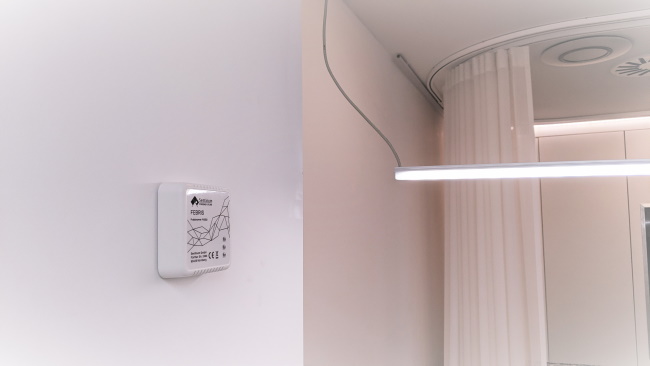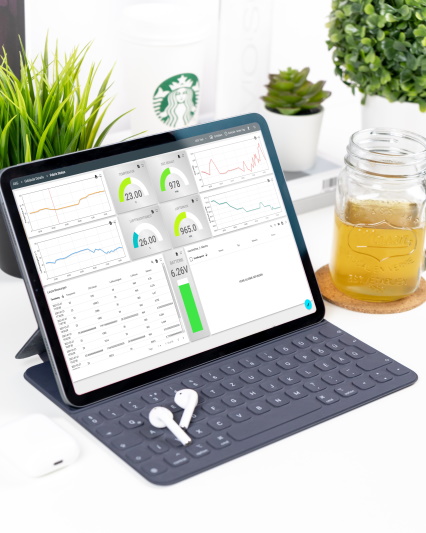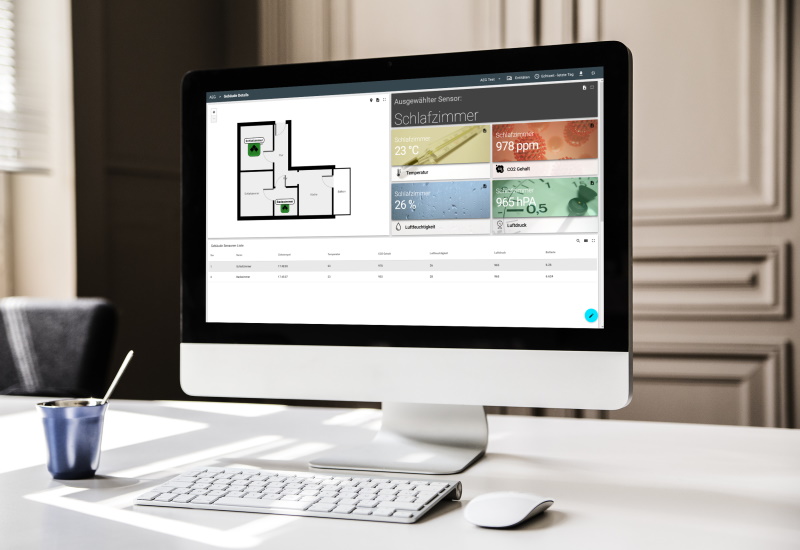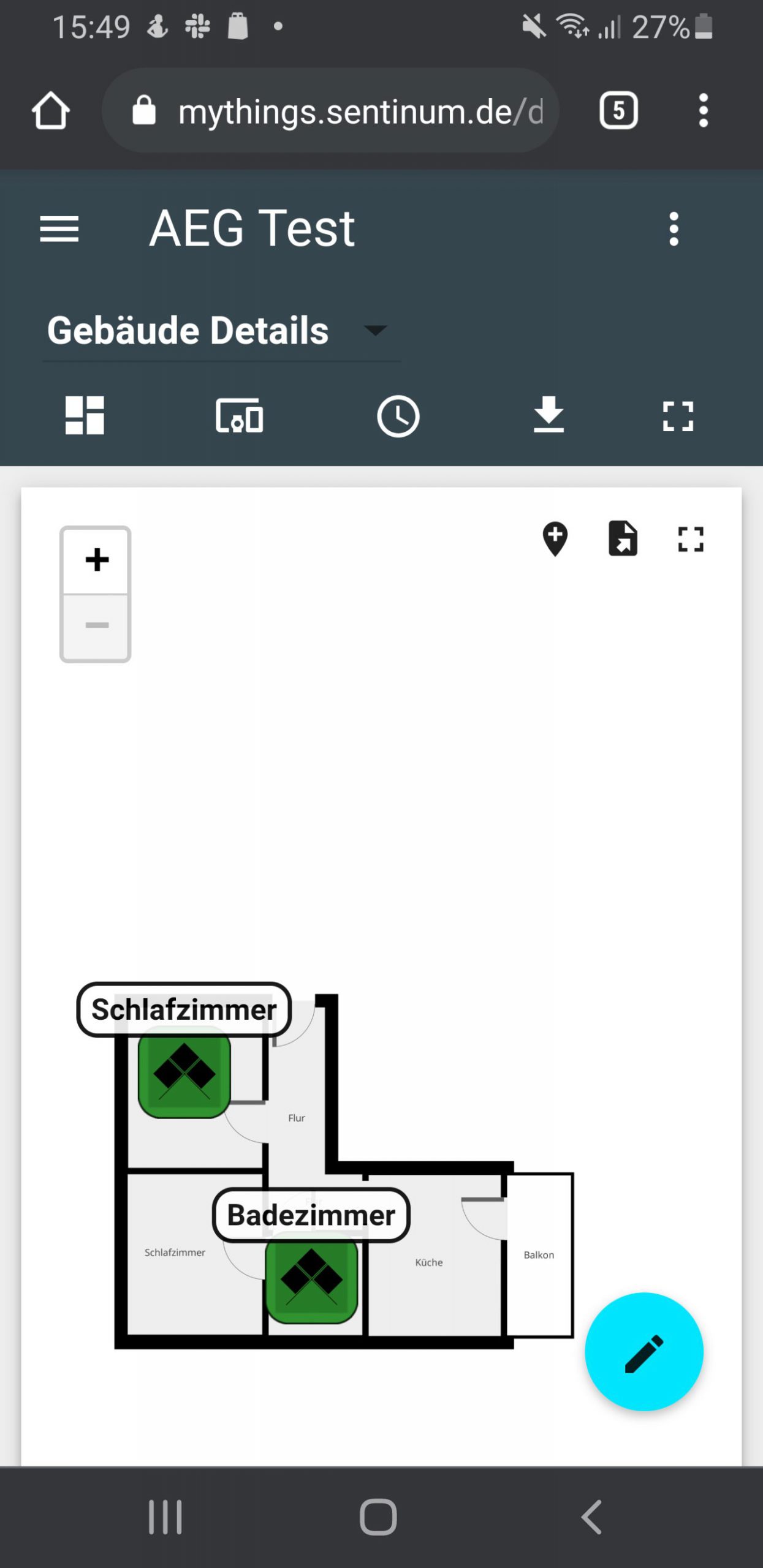Rapid development with Yamori
Yamori provides the ideal basis for developing new products quickly and bringing them to market. The company Sentinum was able to develop a fast solution for an indoor CO2 sensor FEBRIS with the help of the Yamori DEV KITS. The sensor has ISM band communication standards as well as data transmission via mobile radio. For the development of the sensor we were able to transfer prefabricated hardware and software modules from the Yamori platform to the target design. This approach and the use of tested functional blocks provides a robust framework for a new development. As a result, Sentinum was able to complete the development process in less than two months. The further certification process could also be streamlined. For the sensors, only an interface for connecting different sensors had to be created during development. The software blocks for communication with the cloud were almost entirely taken over from the Yamori platform.
In addition to the sensor, an end-user application was built. This allows a clear device management and the intelligent processing and display of the data.
Background
Currently, aerosols in the air we breathe have been identified as a possible route of transmission of corona virus. Studies show that infection rates are higher indoors than outdoors. Thus, it is reasonable to suspect that poorer indoor air quality is an indicator of increased risk of infection. One measure of indoor air quality is the CO2 gas concentration, which the sensors in the Febris series can detect. The higher the concentration, the worse the indoor air and the higher the likelihood of infection. As a result, the Febris is designed to provide direct warnings when limits are exceeded and to help better understand infection pathways through data aggregation and analysis. Adequate ventilation is envisaged as a measure to reduce the risk.
Febris sensor profile
Febris is a smart and wireless Corona traffic light from Sentinum. The sensor records the CO2 content in the air in ppm, as well as temperature and humidity at regular intervals and warns acoustically via a buzzer and visually via bright LEDs when the specified limit value is exceeded. In addition, the data is transmitted at regular intervals via NB-IoT or LoRa. In this way, rooms or entire buildings can be efficiently monitored. Alternatively, the sensor can also be equipped with an additional VOC sensor. The sensor is powered by 4xAA cells, which are easily replaceable. With a simple double tap on the sensor an immediate measurement can be triggered manually. Wall mounting is recommended. Alternatively, the sensor can also be placed on desks or cabinets.





Neueste Kommentare